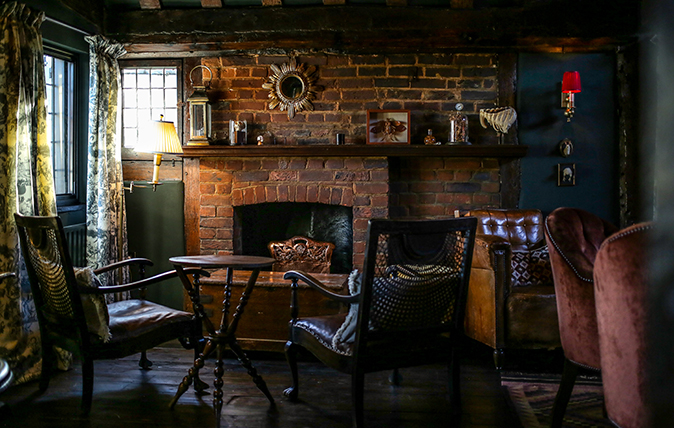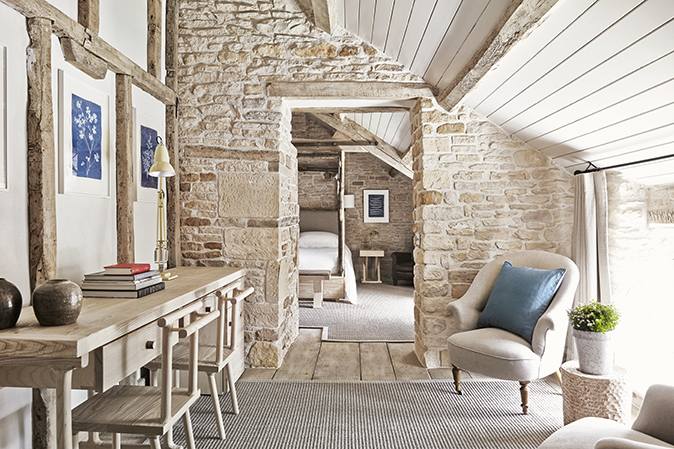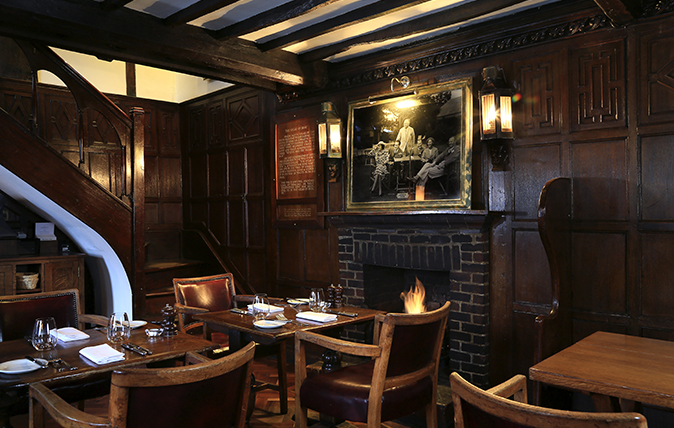A new spin on the inn: Heston Blumenthal's redesigned Hind's Head
Increasingly, the redecoration of former pubs offers an opportunity to evoke a long-lost style of decoration.


Few things offer greater insight into the future of interior design than swanky London clubs and hotels and none more effectively than those that graced the first incarnation of Annabel’s, where Mark Birley and Nina Campbell created a new standard in buttoned, deep-pile luxury.
Almost overnight, velvet banquettes, paintings with picture lights and strategically placed occasional tables became a requirement of any project with ambitions of luxury.
Other projects have subsequently achieved a similarly lasting impact, not least Ian Schrager’s St Martin’s Lane hotel, which launched a hugely popular brand of Minimalism, and then, in the following decades, Kit Kemp and Soho House both created similarly influential looks.
More recently, designers have been required to tackle a style of architecture that, in many respects, is far more challenging: the transformation of the traditional country boozer into somewhere that weekending West Londoners would feel at home. It was in the Cotswolds (where else?) that the art was first perfected, most famously The Wild Rabbit in Kingham, which demonstrated the transformative possibilities of exposed stone, tongue-and-groove panelling and a restrained palette of pale blues and neutrals.

Now, there are signs that the look is taking an even more dramatic turn. Heston Blumenthal’s recently revamped Hind’s Head in Bray, a 15th-century coaching inn, offers a vision of a long-lost style of Home Counties pub in which you might expect to find Terry-Thomas sinking a couple of stiff G&Ts before a burn in his DB3. The interiors celebrate furnishing—old canework chairs, ottomans with fathomlessly deep bullion fringes and taxidermy in bell jars—that bossy style dictators were imploring us to jettison a few years ago. The effect is to evoke a look that’s redolent of country pubs before the arrival of that ubiquitous church-pew-and-chalkboard combo.
You only need to look at the success of tastemakers such as Ben Pentreath—the designer who has revived a host of comforting staples of quintessential Englishness from Staffordshire pottery to oak dressers—to see that, after decades of appropriating the aesthetic traditions of other parts of the world (Scandinavia, France, Japan, New England), we’re at last beginning to celebrate our own.

The Hinds Head, Bray: 'beautiful British food'
We visit Heston Blumenthal's pretty Tudor pub.
Exquisite houses, the beauty of Nature, and how to get the most from your life, straight to your inbox.

Heston Blumenthal’s top five barbecue tips
Top chef Heston Blumenthal is a great lover of outdoor cooking, and has shared his tips.
-
 Child stars, Prince and nursery rhymes: It's the Country Life Quiz of the Day, December 5, 2025
Child stars, Prince and nursery rhymes: It's the Country Life Quiz of the Day, December 5, 2025It's all in today's quiz.
-
 ‘Calf’s brains have a bland, gentle richness that soothes and cossets': Tom Parker Bowles on the joys of eating offal
‘Calf’s brains have a bland, gentle richness that soothes and cossets': Tom Parker Bowles on the joys of eating offalEating offal it is more sinned against than sinning, but it offers the ultimate in magnificent, fully immersive eating.
